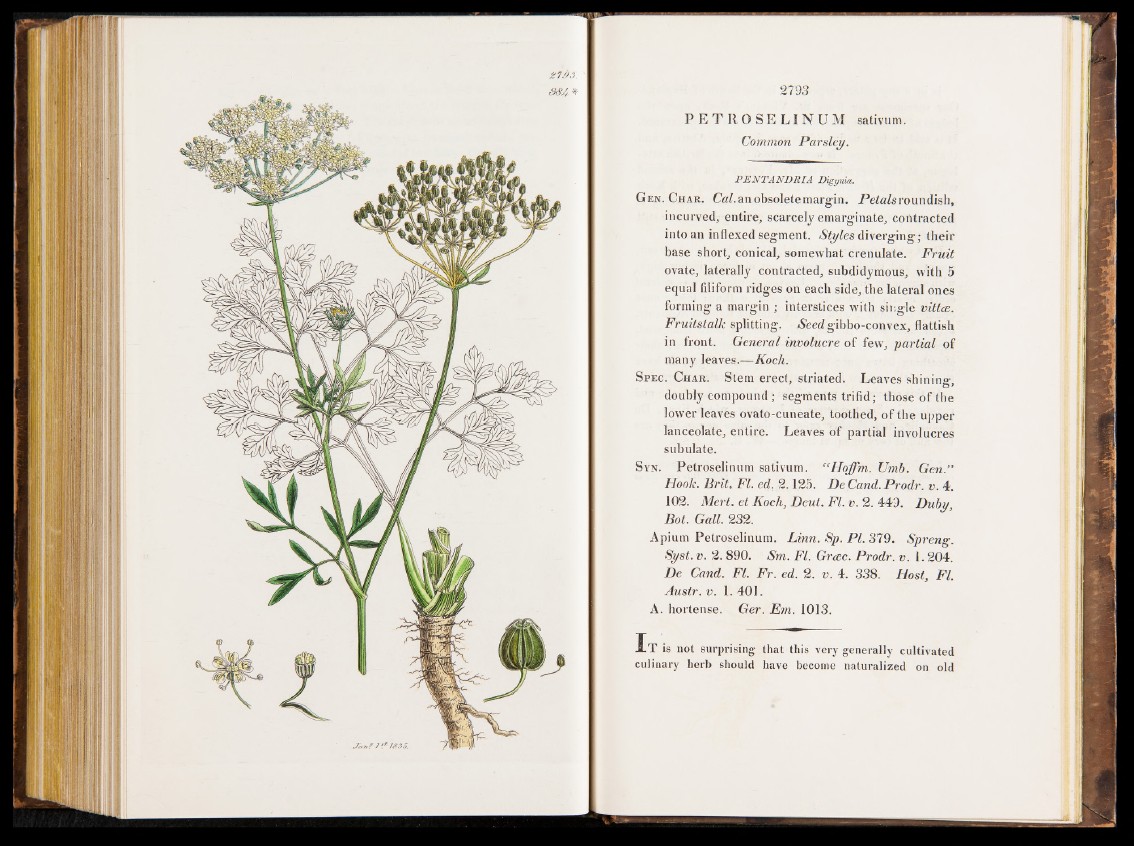
P E T R O S E L I N U M sativum.
Common Parsley.
P E N T A N D R IA Digynia.
Gen. Char. Cal.an obsolete margin. jPefaZsroundish,
incurved, entire, scarcely emarginate, contracted
into an indexed segment. Styles diverging; their
base short, conical, somewhat crenulate. Fruit
ovate, laterally contracted, subdidymous, with 5
equal filiform ridges on each side, the lateral ones
forming a margin ; interstices with single vittce.
Fruitstalk splitting. Seedgibbo-convex, flattish
in front. General involucre of few, partial of
many leaves.—Koch.
Spec. Char. Stem erect, striated. Leaves shining,
doubly compound ; segments trifid ; those of the
lower leaves ovato-cuneate, toothed, of the upper
lanceolate, entire. Leaves of partial involucres
subulate.
Syn. Petroselinum sativum. “Hoffm. Umb. Gen.”
Hook. Brit. FI. ed. 2.125. DeCand. Prodr. v. 4.
102. Mert. et Koch, Deut. FI. v. 2. 449. Duby,
Bot. Gall. 232.
Apium Petroselinum. Linn. Sp. PI. 379. Spreng.
Syst. v. 2. 890. Sm. FI. Grcec. Prodr. v. 1.204.
De Cand. FI. Fr. ed. 2. v. 4. 338. Host, FI.
Austr.v. 1.401.
A. hortense. Ger. Em. 1013.
I t is not surprising that this very generally cultivated
culinary herb should have become naturalized on old